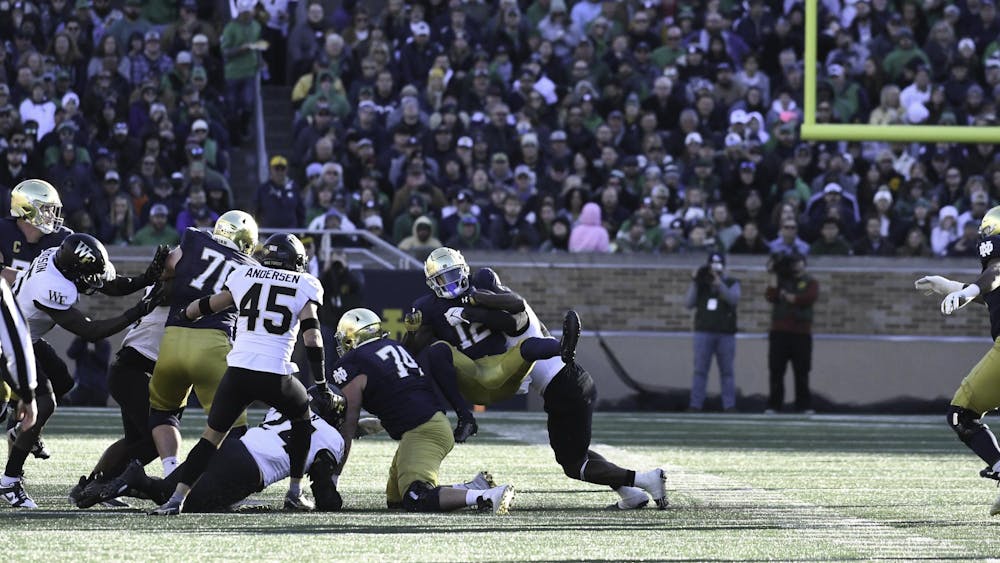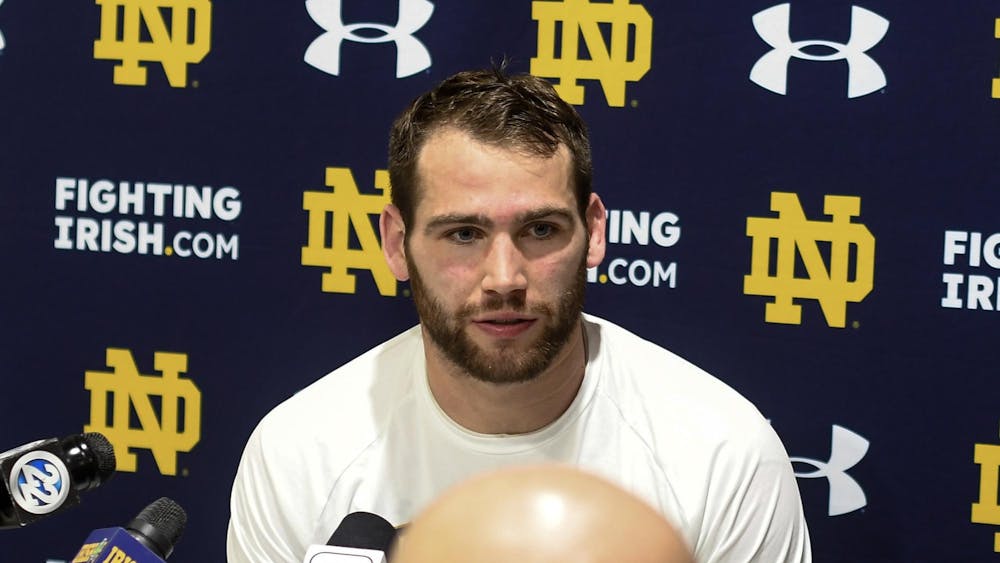Just over five months ago, the Cleveland Indians came to bat in the bottom of the ninth with a chance to win the World Series.
In most years, this might be all you needed to know — a really good team went really far and nearly won it all. Happens to a bunch of teams.
But most ball clubs don’t do that with their No. 2 and No. 3 starters unavailable — sorry, I’m not counting Danny Salazar’s three World Series innings with the Tribe trailing as him being “available” — let alone with their once-No. 5, suddenly No. 3 starter leaving a postseason game in the first inning after he cut his finger on a drone.
Yet, with the guidance of manager Terry Francona and the left arm of reliever Andrew Miller, the Indians nearly won it all.
Miller made 10 postseason appearances, all of which except one (World Series Game 7) ended with an Indians win. And every time he took the field, it felt like the situation was a little different. In the opening game of the postseason, and again in Game 3 of the World Series, Miller entered in the fifth inning and picked up the win. On the flip, Francona waited until there were two outs in the eighth to use Miller in Game 3 of the ALCS, keeping him in to record four outs and close out the game.
Contrary to a reliever’s typical usage, Miller pitched more than an inning in each of his 10 outings last October (and November), with outings stretching from 1 1/3 to 2 2/3 innings in length. He only once threw fewer than 20 pitches, and had three outings where his pitch count stretched past 40.
The discussion about how the Indians were overcoming injury quickly turned to a discussion about Miller — and, in part, concerning whether or not we’d see top relievers routinely recording six outs per game in the future. That conversation, though, misses the actual teachable point to be taken from Francona’s management last October.
Miller’s long-duration outings were made possible by the nature of the postseason; teams never play on more than three consecutive days, and when teams take care of business early in their series, they get long spells of rest. Thus, long-term fatigue was never a true concern for Francona with Miller, like it would be during the regular season, when teams often go weeks at a time with a lone off day.
The actual lesson, though, comes in understanding the idea of “leverage,” a term that seeks to measure the level of pressure at any point during the game. For an example, suppose it’s a one-run game in the bottom of the ninth, and the bases are loaded — this is, effectively, the most stressful moment in baseball, and thus, the highest-leverage play.
While Francona didn’t necessarily follow the actual Leverage Index statistic to dictate his use of Miller, he at least did so in theory — if Miller could come in and get key outs in the seventh inning, it made closer Cody Allen’s job a lot easier in the ninth.
Take Game 1 of the ALCS, when the Indians held a 2-0 lead in the seventh inning. With one out, Francona pulled Corey Kluber to go to Miller, who got two easy outs to set himself up to face the heart of the Blue Jays’ order in the eighth. With Josh Donaldson, Edwin Encarnacion and Jose Bautista due up, this — not the ninth — was probably the key moment of the game. And the Indians had their best reliever in for it. Miller took care of business, letting Allen record a relatively low-pressure save.
Now, let’s set up a scenario: Your team holds a one-run lead with one out in the seventh, but your opponent has the bases loaded and its cleanup hitter at the plate. Who do you want on the mound to secure this crucial out? Your best relief pitcher, or a bridge reliever to get from your starter to your setup man and closer?
I want my best option here, and I’ll worry about who gets the save when my team’s actually in the position to get it.
We’re on the cusp of the next stats revolution in baseball, as we’ll start looking past the save as the key stat for relievers. Teams’ closers will enter more often in the seventh or eighth — because after all, what good is a closer if you never have the lead to use him? (Hello, Buck Showalter.)
And that revolution will have started with Francona and Miller, who, despite not even being a closer, is the best reliever in baseball.













